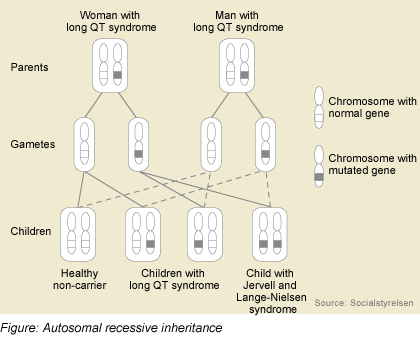Jervell Lange-Nielsen syndrome is the highlight of this week’s post. There are times when a failed hearing screening in the hospital is the first indication that there may be other health concerns for a newborn as discussed in our post a couple of weeks ago. Jervell Lange-Nielsen syndrome has not only hearing loss, but another health condition that can be even more frightening as a parent, heart arrhythmia.
As a mother, one of the most frightening unknowns is SIDS (Sudden Infant Death Syndrome). Sleep positions, monitoring and sleepless nights are all common practices used to make sure your infant gets through the night. When researching Jervell Lange-Nielsen syndrome, some studies suggest this is responsible for 9.5% of all the SIDS cases. The strongest indicator for the syndrome is a heart condition these children have, Long QT syndrome;
“Long QT syndrome is a congenital disorder characterized by a prolongation of the QT interval on electrocardiograms and a propensity to ventricular tachyarrhythmias (fast heart rhythms in the lower part of the heart), which may lead to syncope (fainting), cardiac arrest, or sudden death.”
The more common name of irregular heartbeats is called arrhythmia. The second symptom is a congenital bilateral profound sensorineural hearing loss.
Jervell Lang-Nielsen syndrome is an autosomal recessive pattern, meaning the mutated gene, KCNE1 and KCNQ1, comes from each of the parents. Many times the carrier shows heart symptoms, but no hearing related signs. The prevalence of this syndrome is highest in Denmark with 1 in 200,000 births having the syndrome. Worldwide the prevalence is much lower, 1.6 to 6 in 1,000,000.
This site gives many links on treatments, genetic testing, physicians in your area and support if you know of anyone at high risk to this syndrome.
https://www.socialstyrelsen.se/rarediseases/jervellandlange-nielsensyndrom for featured image






